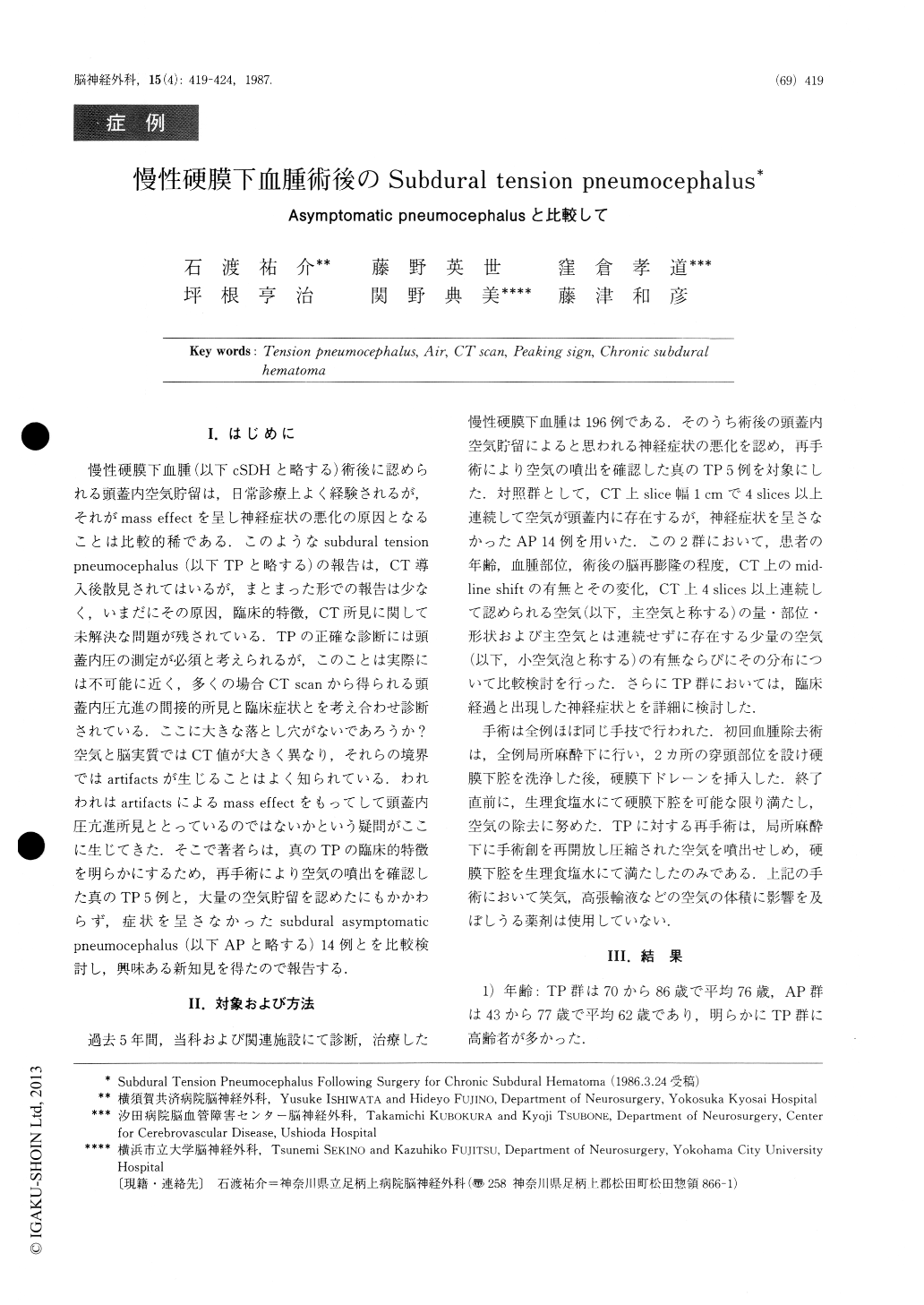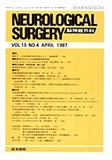Japanese
English
- 有料閲覧
- Abstract 文献概要
- 1ページ目 Look Inside
I.はじめに
慢性硬膜下血腫(以下cSDHと略する)術後に認められる頭蓋内空気貯留は,日常診療上よく経験されるが,それがmass effectを呈し神経症状の悪化の原因となることは比較的稀である.このようなsubdural tensionpneumocephalus(以下TPと略する)の報告は,CT導入後散見されてはいるが,まとまった形での報告は少なく,いまだにその原因,臨床的特徴,CT所見に関して未解決な問題が残されている.TPの正確な診断には頭蓋内圧の測定が必須と考えられるが,このことは実際には不可能に近く,多くの場合CT scanから得られる頭蓋内圧亢進の間接的所見と臨床症状とを考え合わせ診断されている.ここに大きな落とし穴がないであろうか?空気と脳実質ではCT値が大きく異なり,それらの境界ではartifactsが生じることはよく知られている.われわれはartifactsによるmass effectをもってして頭蓋内圧亢進所見ととっているのではないかという疑問がここに生じてきた.そこで著者らは,真のTPの臨床的特徴を明らかにするため,再手術により空気の噴出を確認した真のTP5例と,大量の空気貯留を認めたにもかかわらず,症状を呈さなかったsubdural asymptomaticpneumocephalus(以下APと略する)14例とを比較検討し,興味ある新知見を得たので報告する.
Subdural tension pneumocephalus (TP) following surgery for chronic subdural hematoma was analyzed in 5 cases from clinical standpoints of view, especially from CT findings. The cases were compared with 14 cases of subdural asymptomatic pneumocephalus (AP). The TP tends to complicate elderly patients who showed a poor re-expansion of the brain after irrigation of bilateral chronic subdural hematoma.
In such patients, it is difficult to make an exact di-agnosis of TP because of residual mass effect of the evacuated hematoma. Significance of mass effect caused by subdural air has been discussed in the litera-ture only little.

Copyright © 1987, Igaku-Shoin Ltd. All rights reserved.


